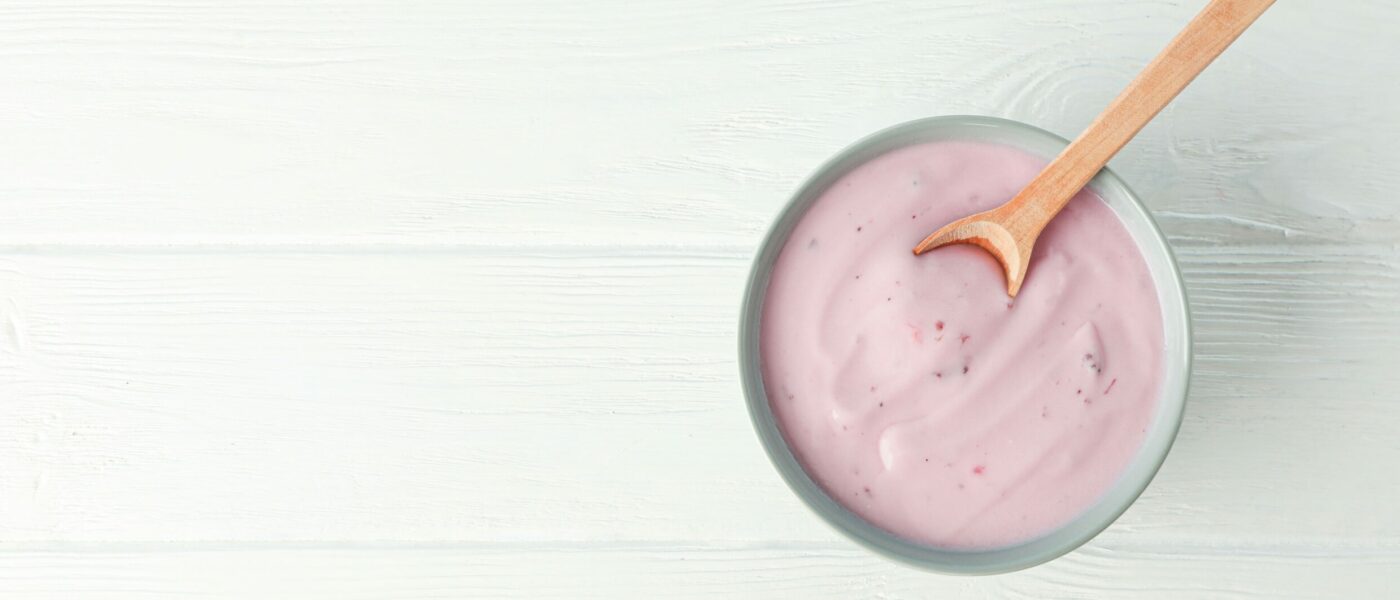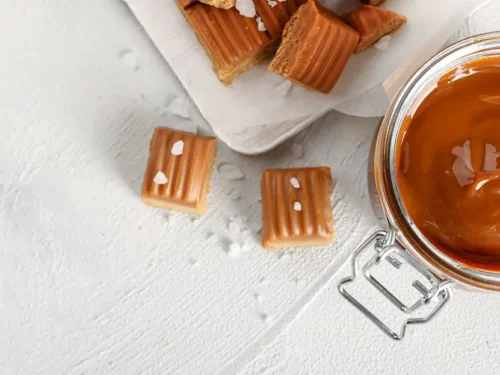
Recently, we welcomed a yoghurt maker into our home, and safe to say it was a decision we were both very happy with. With the convenience of making yoghurt from the comfort of our kitchen, it opened up a world of endless possibilities to try different flavours that you cannot buy with your regular yoghurt. For those reading, it will come as no surprise that what I am about to share with you is a recipe for no other than how to make homemade yoghurt with (shh) tea.
As I mentioned above, having the autonomy to make your own yoghurt leaves you free to explore whatever flavour you so desire. In this case, what is always the object of our desire is tea. I do not need to justify this to you, because we all know how much better things are with tea in them. Yoghurt is no different, and what really excites me is the prospects of using my tea yoghurt to make delicious tasting smoothies.
But first things first, let us get started on making our yoghurt! This recipe can be made either using a yoghurt maker, or if you do not have access to one, you can use the oven method (just make sure it has a working light). Both methods are made to produce delicious, creamy yoghurt.
Tips and Tricks
● Prepare your space- As always set up your space with all your required utensils to help things run smoothly.
● Higher fat content milk makes a thicker yoghurt- If you are after a thick yoghurt be sure to use a full cream milk as opposed to a 2% fat or skim, as full cream milk contains higher fat content. The fat in yoghurt is what gives it a thick consistency.
● Add cream for added thickness- In addition to full cream milk, you can also add cream to your milk, or replace your milk entirely with cream. Beware though, if solely using cream, as cream is low in lactose, if you are wanting to reuse as a yoghurt culture, it will not be sustainable long-term because the bacteria will not have enough to feed on and grow. In this case, you would have to reactive it with milk after a few batches.
● Look for a starter culture that suits your requirements- There are many different starter cultures to choose from, ranging from heirloom (reusable) to single-use, tart, tangy, or mild flavour, thick or thin consistency, Thermophilic (needs heat to culture properly), and Mesophilic (can be cultured at room temperature). Thermophilic cultures generally produce a thicker yoghurt if that is what you are after.
● Store bought yoghurt can also be used as an initial yoghurt starter for a few uses, but will degrade over time- Commercial yoghurts normally only contain a couple strands of bacteria and do not have the support to be everlasting, hence these cultures are not always good at replicating themselves and need to be replaced when the quality drops. However, if you do not make yoghurt regularly, then store bought yoghurt is completely fine. I recommend using a Greek plain yoghurt for your starter.
● Make regularly if using the same starter- If using your homemade yoghurt as a culture starter for continuing batches, each batch will ideally need to be made within 7 days to ensure the cultures are still replicating themselves.
● Always use fresh milk or cream- Using fresh ingredients makes the final product taste better, and ensures your yoghurt lasts longer.
● It doesn’t have to be cow’s milk- Goat milk can be used to make a thinner yoghurt, while sheep milk (also used for making cheese) makes for a thicker and creamier yoghurt. If you are wanting a dairy free option, nut milks (soy, almond, cashew) or coconut milk are also options. When looking for a dairy-free culture, you can opt for a vegan yoghurt culture mix or a store-bought vegan yoghurt. Be warned that you may need to add a thickener to this as dairy-free milks tend to be quite thin.
● Heat the milk or cream longer for a firmer yoghurt- Heating at a higher temperature (80-85 degrees Celsius) for a longer time (20-30 minutes) will disrupt the milk proteins, enabling them to form a stronger network, and therefore thicker consistency. Be careful not to heat over 85 degrees Celsius, as boiling the milk or cream can alter its texture. If you happen to go over, turn off the heat and let it return to the cultured temperature.
● Heat milk or cream slowly- When heating your milk or cream over stovetop, allow it to slowly get to its desired temperature. Heating too fast can result in the yoghurt having a grainy texture.
● You can use an ice water bath if wanting to hurry the cooling process- When waiting for the milk or cream to cool back down, you can place your pot into a bowl of ice to speed it along.
● The longer you incubate your yoghurt the firmer it becomes- Whether it is through a yoghurt machine or in the oven, the longer you leave your yoghurt- the firmer and tangier it will become. The longer incubation time also helps to produce more beneficial bacteria.
● When using the oven, wrapping a thick towel around the pot keeps it insulated- This helps to trap the heat inside whilst it incubates.
● The oven light acts as a gentle heat source- Keeping the oven light on during the incubation period, helps the oven to retain some of its heat. If your oven does not allow you to switch on its light, you can still incubate in the oven, but may need to keep turning the heat on and off.
● Strain your yoghurt to create your very own Greek yoghurt- Straining your yoghurt after incubation helps to thicken its consistency in the same method as Greek yoghurt. When straining you will need a large glass bowl, a fine mesh strainer, and a cloth of some sort (thin cotton cloth, dampened paper towel, or dampened paper coffee filter are all okay).
● Strain your yoghurt once it has been refrigerated first- Straining refrigerated yoghurt is what helps to set the culture to give it a thicker consistency.
● The liquid whey left after straining can be collected and used in other recipes- The whey from your yoghurt is super nutritious and can be used to start more yoghurt, made to be put in your smoothies, or used as a broth just to name a few.
● Natural yoghurt tastes very sour compared to unnatural store bought yoghurt- If you are not a fan of sour yoghurt, then you may want to add some natural sweetener to it. If adding sugar, this needs to be done whilst the milk is heating. Otherwise, feel free to stir in honey or maple syrup into your yoghurt once it is finished.
—————————————————————————————————————————————————————————————————————————————-
Ingredients
1 litre of Full Cream Milk; or
(Half Milk and Half Cream; or Replace with 1 litre of Cream)
6 tbsp Tea* Leaves (18g)
1 packet of Heirloom Yoghurt Starter; or
(1 cup of Plain Greek** Yoghurt)
What I Need
1 Heavy Saucepan
Mixing Spoon
2 Mixing Bowls
1 Fine Mesh Strainer
1 Cup
1 Ladle
Cooking Thermometer
Yoghurt Maker; or
(5 Glass Canning Jars with Lids)
Thick towel (Oven Method)
Cloth (for Straining)
Glass Bowl (for Straining)
Plastic Wrap (to Cover When Straining)
Method
Yoghurt Maker Method
1. Place 1 litre of milk in a saucepan over medium heat until the milk begins to simmer, turn heat to low, and place tea leaves into the milk. Stir leaves into the milk and turn off your heat. Leave to steep for three minutes.
(Use can use any type of tea here. Black, green, oolong, and herbal teas are all wonderful options. It all depends on what you are feeling).
2. Pour your milk into a fine mesh strainer placed over a bowl, and press down on the leaves with the back of a spoon to ensure you strain as much of the milk from the tea leaves. Do not worry if some is stuck to the leaves. Gently mix your tea milk to incorporate the flavour evenly and return to the pot.
3. Set the heat to medium and stir the tea milk regularly until your thermometer reads 80-85 degrees Celsius. We want to hold it at that temperature for anywhere between 20-30 minutes to truly heat up the milk proteins, so they will form a smooth and thicker consistency.
(If wanting to add sugar or a natural sweetener you can add it here as the heated milk will dissolve these. If using sugar, I would suggest using brown sugar, as I find white sugar does not work with certain teas, but entirely up to you).
4. Turn off heat and leave the tea milk to cool down to 44-46 degrees Celsius. You can place the pot in a bowl of iced water to hurry along the process.
5. Take 1 cup of tea milk and combine it into a bowl with your culture starter and thoroughly mix them together.
6. Return this mix back to your main pot of tea milk and mix all together.
7. Ladle the tea milk into your yoghurt maker jars and leave to incubate for 8-10 hours.
8. Place jars in the refrigerator for another 4-6 hours until thickened and ready to serve.
*Read to the end if you wish to strain your yoghurt for thicker results*
Oven Method
1. Place 1 litre of milk in a saucepan over medium heat until the milk begins to simmer, turn heat to low, and place tea leaves into the milk. Stir leaves into the milk and turn off your heat. Leave to steep for three minutes.
(Use can use any type of tea here. Black, green, oolong, and herbal teas are all wonderful options. It all depends on what you are feeling).
2. Pour your milk into a fine mesh strainer placed over a bowl, and press down on the leaves with the back of a spoon to ensure you strain as much of the milk from the tea leaves. Do not worry if some is stuck to the leaves. Gently mix your tea milk to incorporate the flavour evenly and return to the pot.
3. Set the heat to medium and stir the tea milk regularly until your thermometer reads 80-85 degrees Celsius. We want to hold it at that temperature for anywhere between 20-30 minutes to truly heat up the milk proteins, so they will form a smooth and thicker consistency. Whilst your milk is holding its heat, preheat your oven on its lowest setting and leave on for 20-30 minutes.
(If wanting to add sugar or a natural sweetener you can add it here as the heated milk will dissolve these. If using sugar, I would suggest using brown sugar, as I find white sugar does not work with certain teas, but entirely up to you).
4. Turn off heat from your pot and leave the tea milk to cool down to 44-46 degrees Celsius. Whilst it is cooling, turn your oven off and switch its light on, enabling your oven to cool down at the same time as your milk. You can place your pot of milk in a bowl of iced water to hurry along the process.
5. Take 1 cup of tea milk and combine it into a bowl with your culture starter and thoroughly mix them together.
6. Return this mix back to your main pot of tea milk and mix all together.
7. Cover your pot with a lid, wrap it in a thick towel, and place inside your oven for 8-10 hours.
(You may need to check on your temperature the first couple of times you try this, until you become familiar with how your oven retains heat. The ideal temperature you want it to be is between 44-46 degrees Celsius. If the temperature drops below, switch your oven back on, and once it gets back to the right temperature, switch it off again).
8. Remove pot from oven and place yoghurt into glass jars for storage in the refrigerator for another 4-6 hours until thickened and ready to serve.
How to Strain Your Yoghurt
1. Line your mesh strainer with 2-3 layers of cloth and set it over your glass bowl.
(You can use any thin cloth here as you want the liquid to easily pass through. If using paper towel, layer them up to prevent breakage, and dampen to prevent them absorbing the strained liquid. The same applies if you are using paper coffee filters- ensure they are damp).
2. Remove yoghurt from the fridge and place in the lined strainer until it almost reaches the edge.
3. Cover the strainer and bowl with plastic wrap or paper towel, and place in the refrigerator to allow your yoghurt to strain for a minimum of 10-12 hours, or until it has reached your desired consistency.
4. Stir yoghurt once or twice during the straining process to allow for an even consistency.
5. Once your yoghurt is how you want it, place into your storage jars, and keep them in the fridge- best consumed within two weeks.
6. The whey that is left over from your yoghurt can be stored for future cooking, or used as a starter culture*** for your next yoghurt.
—————————————————————————————————————————————————————————————————————————————-
Tea Yoghurt Smoothies
Pairing my tea yoghurt with smoothies would be my favourite way to use. The best thing about it is, depending on my mood, I can change the type of tea which creates a whole new smoothie every time. What I am loving right now is lavender tea yoghurt, mixed with rolled oats, chia seeds, honey, blueberries, banana, a dash of whey liquid, and a sprinkle of vanilla protein powder. It is the perfect energy booster for the day, whilst the lavender in the yoghurt makes it the ultimate soothing smoothie!
Of course there are other ways to serve your tea yoghurt, you can try mixing it with honey or maple syrup, adding to muesli, pancakes, baked goods, or simply eating it the old-fashioned way- straight out of the jar! I hope you enjoy your tea yoghurt as much as we do.
*Can substitute tea for any chosen tea of your choice.
**If using store bought yoghurt for your starter, I like using plain Greek yoghurt because it doesn’t have any additives of sugar and is a thicker yoghurt. When using non-Greek yoghurts, I find they are too thin and do not add to the consistency that I like. But we all have different preferences, so I will leave it up to you to experiment with different types of yoghurt and flavours, and see what tickles your palate.
***Do not forget to save some of your whey liquid or put aside a cup of your yoghurt if wanting to make another batch relatively soon. This can be used as your starter culture, saving you from having to buy another yoghurt or culture mix. If wanting to create a different flavour, you might want to start from scratch, as your initial yoghurt would already taste of another tea. But mixing tea flavours can be fun too, as certain teas work really well with each other. So, try and see what flavours you can come up with!


